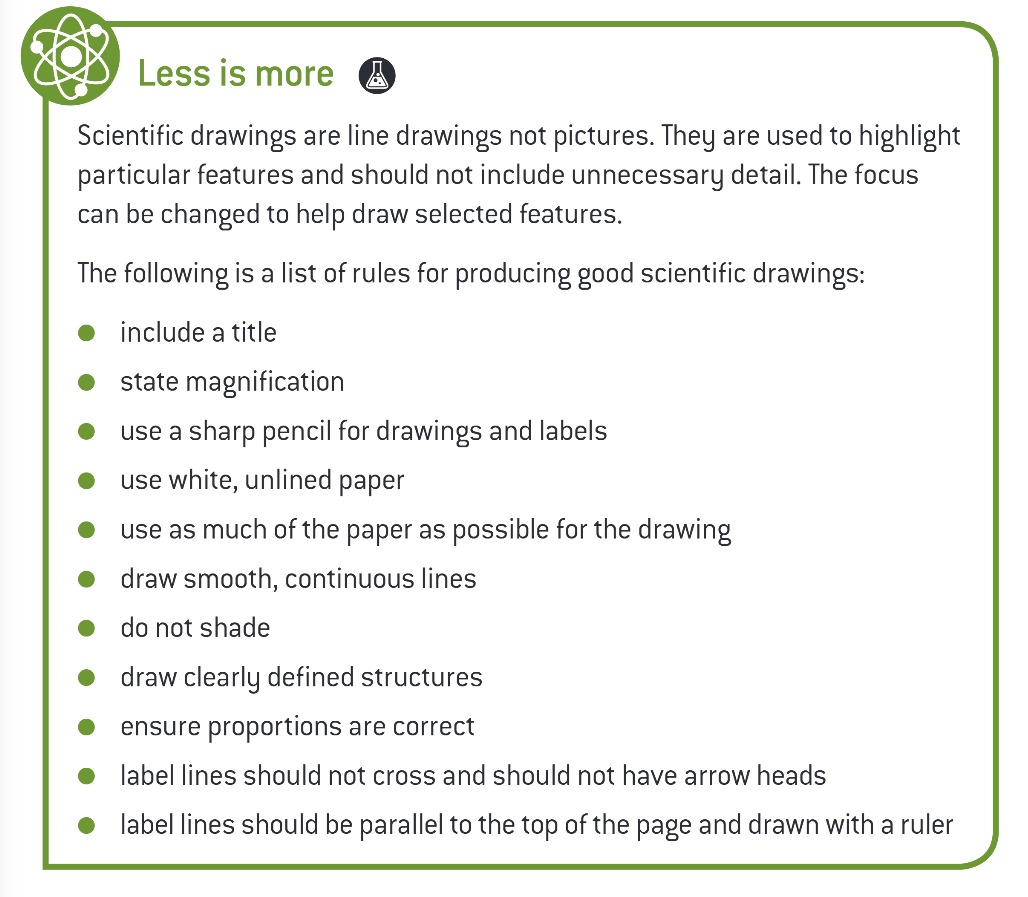Microscopes
1/14
There's no tags or description
Looks like no tags are added yet.
Name | Mastery | Learn | Test | Matching | Spaced |
|---|
No study sessions yet.
15 Terms
Cell theory
Both plant and animal tissue is composed of cells
Cells are the basic unit of all life
Cells only develop from existing cells
What is the importance of microscopes in the study of living organisms
As microscopes w. higher magnification & resolution were developed, cells can be observed for the 1st time
Helps theories be proposed, accepted, or debunked due to evidence
Allows us to discover how details of their structures relate to their functions
Using a microscope
Light moves thru thin & transparent sample
Is magnified by objective lens (stain used to increase contrast)
Reflected in mirrors in turret
Magnified by eyepiece lens
Light microscope
Objective lens: Produces magnified image
Eyepiece lens: Thru which the specimen is viewed, further magnifies the image
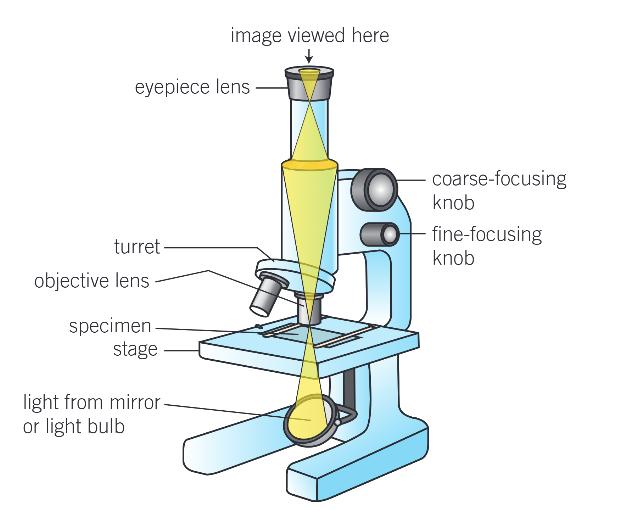
Dry mount
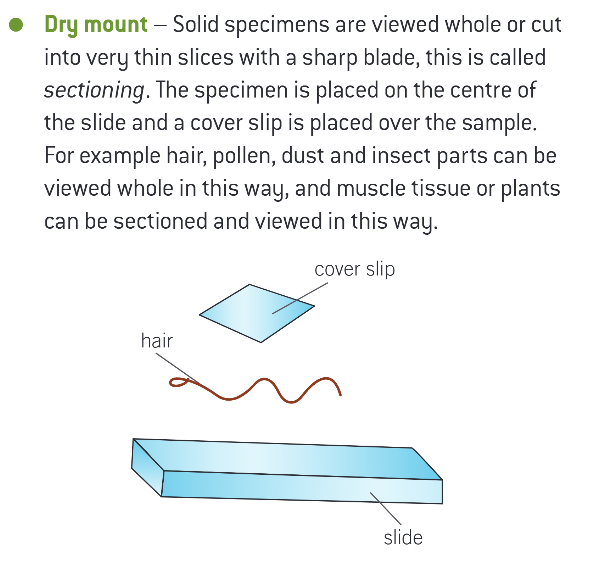
Wet mount
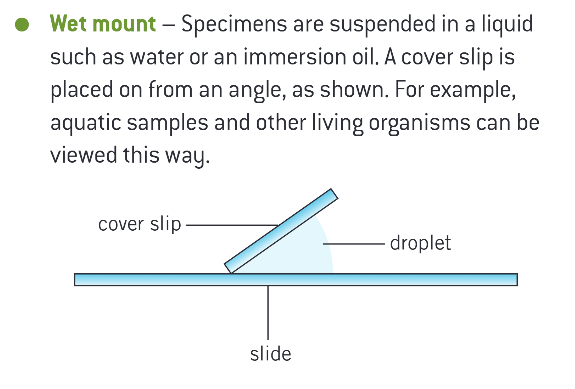
Squash slides
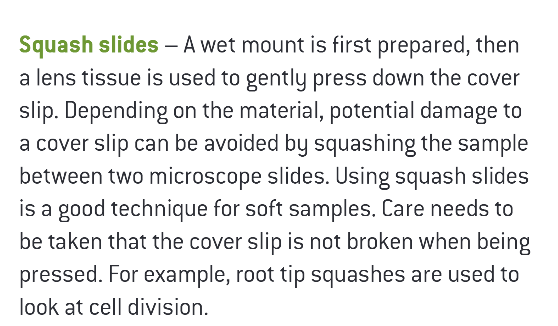
Smear Slides
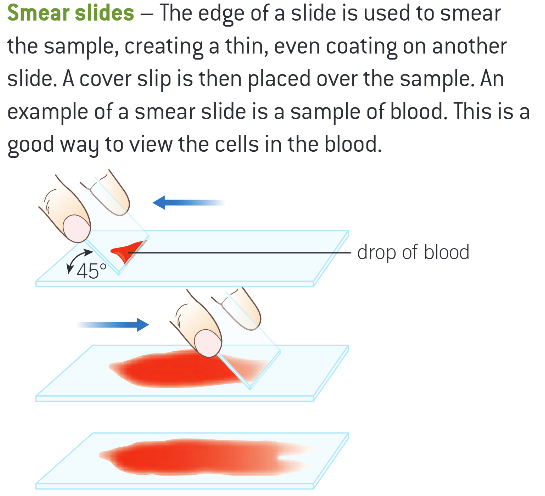
How do components in cell be visible?
Stains (cytosol of cells & cell structures often transparent)
Increases contrast as diff. components within a cell takes up stains to diff degrees
Increase in contrast allows components to be visible
Why do cells need to be stained?
Cells are transparent, so light passes thru them. Stain increases the contrast, making cells more visible
Positively charged dyes
Attracted to negatively charged organelles
Crystal Violet
Methylene blue
Negative stain technique
Using negatively charged dyes that are repelled by negatively charge cytosol
These dyes stay outside cells, standing out against stained background
E.g. nigrosin, Congo red
Differential Staining
Using specific stains to distinguish diff types of cell
Gram Stain Technique
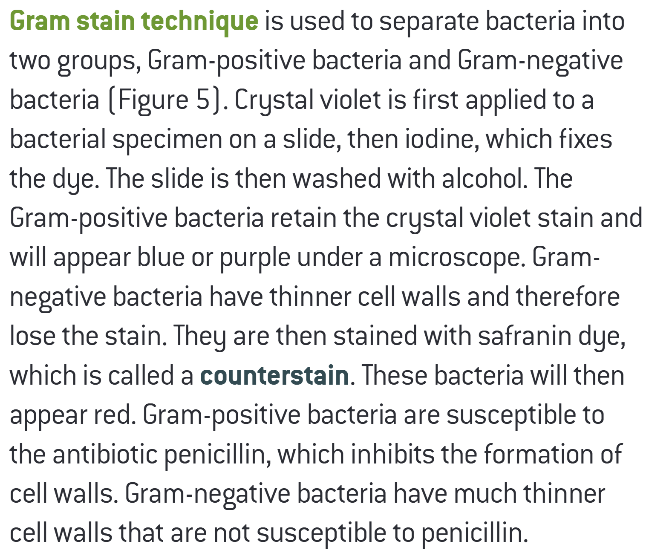
To produce good scientific drawing
